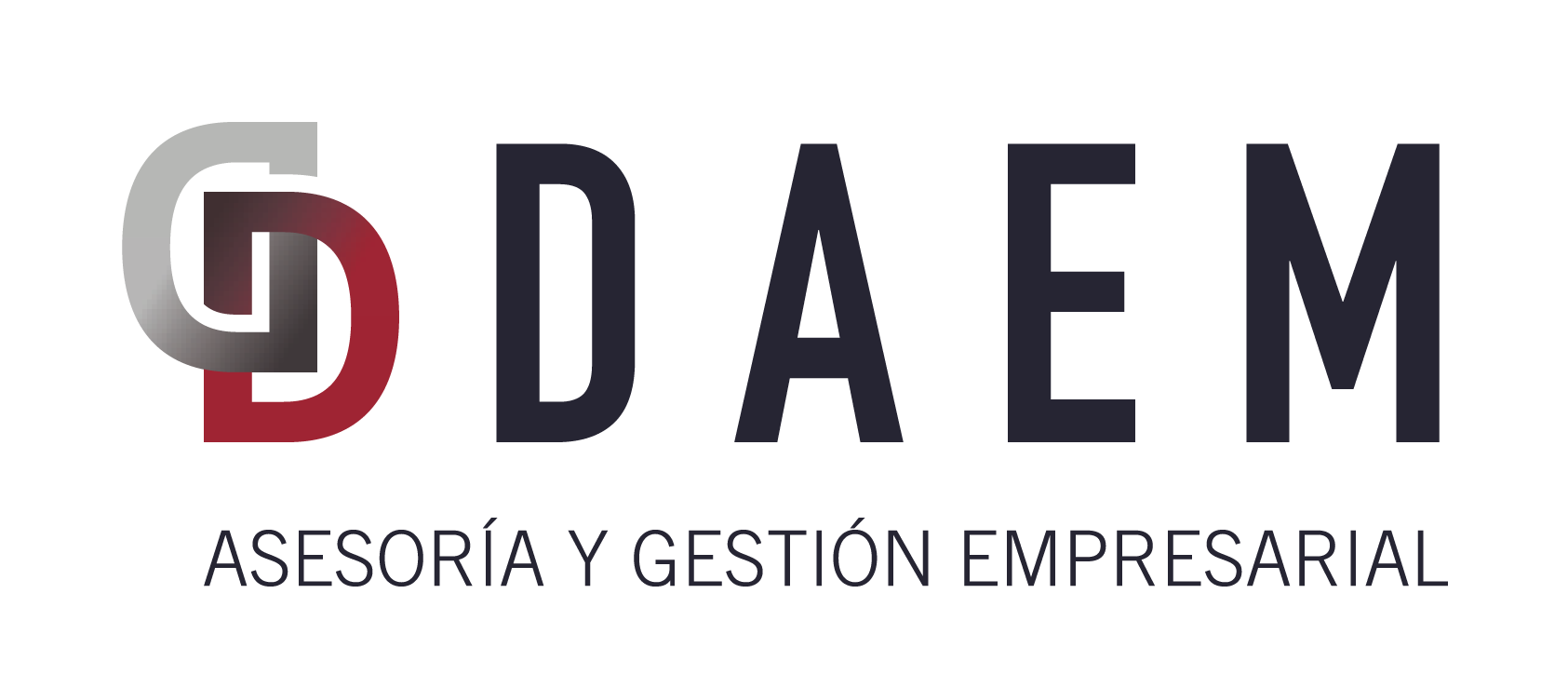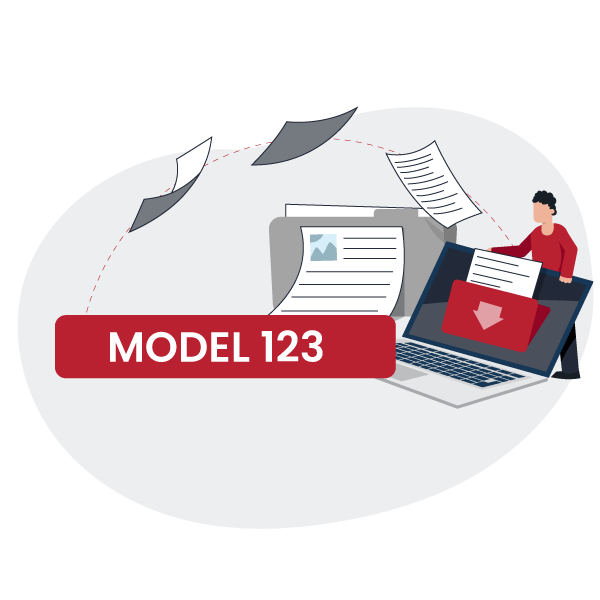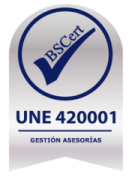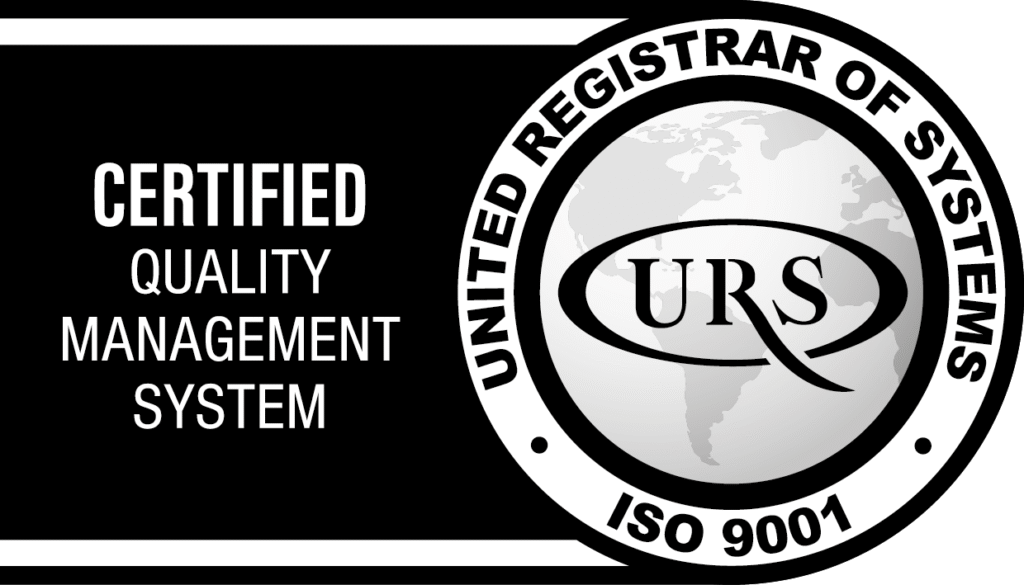Any business owner or professional must be aware of their tax obligations to avoid penalties and keep their business in order. An essential part of this is knowing the withholding tax declaration forms and their respective deadlines.
In this instance, we’ll discuss Model 123, a key document for declaring certain withholdings applied to income from movable capital, such as interest or dividends.
In this article, we’ll explain in detail what Model 123 is, who is obligated to submit it, when it’s submitted, what its purpose is, and what consequences arise from submitting it late. Furthermore, if you have any questions, our tax advisory firm, DAEM, can assist you in complying with regulations without complications.
What is Model 123?
Model 123 is a tax declaration used to inform the Tax Agency about withholdings and payments on account made for payments related to movable capital. This income is not related to a business’s main activity, but if you make these types of payments, you are obligated to declare such withholdings.
This model is common in situations like the distribution of dividends to partners or the payment of interest on received loans, and it applies to both individuals and legal entities. Entities making these payments must withhold a percentage (usually 19%) and declare it using this form.
Who is Obligated to Submit It?
Model 123 must be submitted by freelancers, companies, and other legal entities that make payments subject to withholding or payment on account of IRPF, Corporate Income Tax, or Non-Resident Income Tax (IRNR), provided that these payments are related to income from movable capital.
In simple terms, this type of income can come from products such as shares, bonds, term deposits, dividends, financial leases (not to be confused with property rental), or fixed-income securities.
The most frequent cases you might encounter in your activity include paying interest on loans or distributing dividends to partners of a limited company. Generally, the withholding that must be applied is 19%.
For example, if dividends are distributed among the shareholders of an S.L., you’ll have to apply a 19% withholding on the amount, either on account of IRPF (when the shareholder is an individual) or Corporate Income Tax (if it’s a legal entity).
When Must Model 123 Be Submitted?
The submission frequency for Model 123 is usually quarterly, and the deadlines are as follows:
- 1st quarter: April 1st to 20th
- 2nd quarter: July 1st to 20th
- 3rd quarter: October 1st to 20th
- 4th quarter: January 1st to 20th
However, if your company’s annual turnover exceeds 6 million euros, you will be obligated to submit this model monthly, always during the first 20 days of each month.
Submission is done electronically through the Tax Agency’s electronic office. If you opt for direct debit payment of the tax, it’s important to note that the deadline is usually brought forward by 3 to 5 days.
If you’re not familiar with the process or prefer to leave it to experts, our tax advisory firm can handle everything for you.
What is the Purpose of Model 123?
This model’s main function is to facilitate the advance payment of tax by those who make payments for movable capital income.
For example, when a company pays dividends to one of its partners, it must withhold part of the amount as an advance payment of IRPF or Corporate Income Tax and declare this withholding using Model 123. Thus, the company acts as an intermediary between the taxpayer and the Tax Agency.
This system allows part of the tax to be paid before the partner files their annual return, helping to keep tax obligations up-to-date and avoiding later surprises.
We can compare it to the withholding that employers apply to their employees’ payslips. In both cases, these are advance payments on account of the corresponding tax.
What Happens if It’s Submitted Late?
Like other models, such as Model 111, submitting Model 123 after the deadline entails economic consequences. If you detect the delay yourself and submit the declaration without having received a request from the Tax Agency, you’ll have to pay a surcharge of 1% plus an additional 1% for each full month of delay.
However, if the Tax Agency detects the omission and notifies you, the penalty will depend on the unpaid amount and is classified as follows:
- Minor infraction: 50% of the unpaid amount
- Serious infraction: 100%
- Very serious infraction: 150%
To avoid these types of inconveniences, at DAEM, we take care of submitting your tax declarations within the established deadlines, ensuring regulatory compliance and avoiding unnecessary penalties.
How is Model 123 Related to Other Tax Forms?
Model 123 is directly linked to Model 193, which is an annual summary detailing all withholdings and payments on account related to movable capital income made during the year.
Therefore, it is fundamental that the amounts declared in both models match to avoid discrepancies and potential penalties from the Tax Agency.
If you need advice on how to submit both models correctly, our tax team at DAEM is ready to help you avoid errors and comply with all tax obligations.
At DAEM, we are committed to offering clear, updated, and useful information on tax matters. However, please note that regulations can change, and each case has its specificities. Therefore, we always recommend consulting with tax specialists to ensure you correctly fulfill your obligations.
If you’re looking for reliable and approachable advice, we’ll be happy to support you throughout the process.







